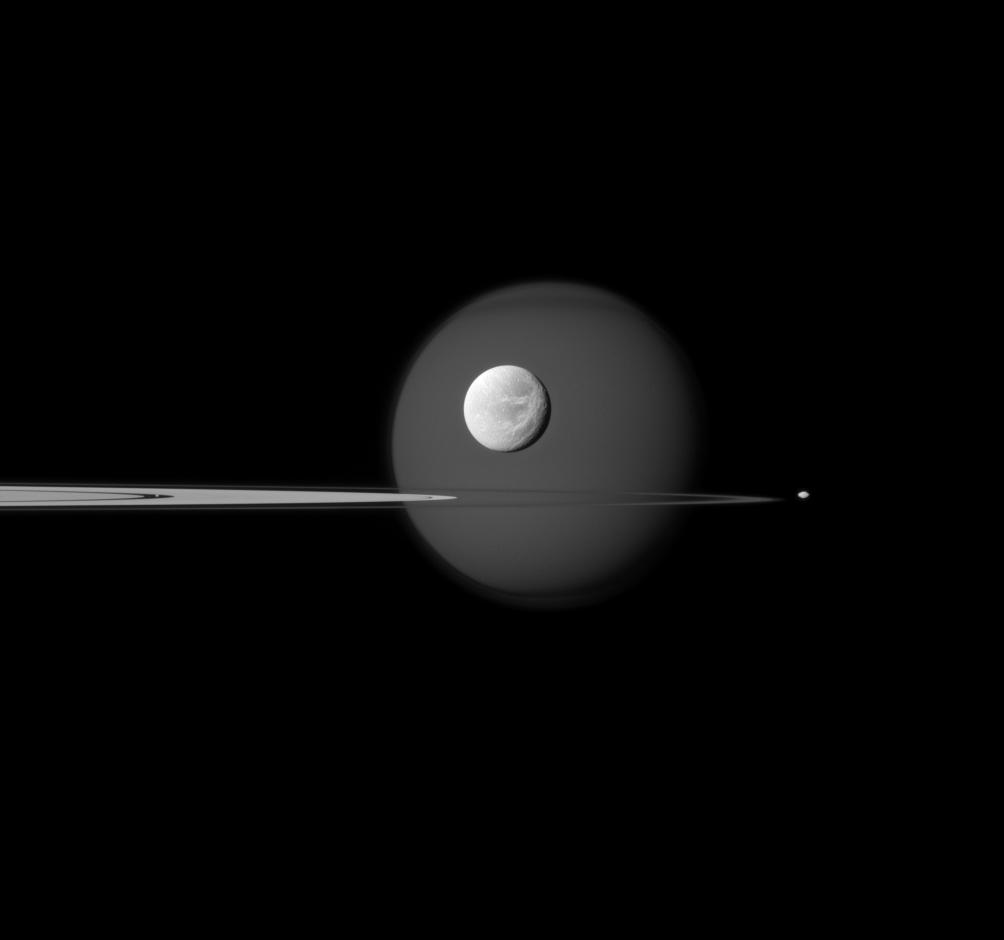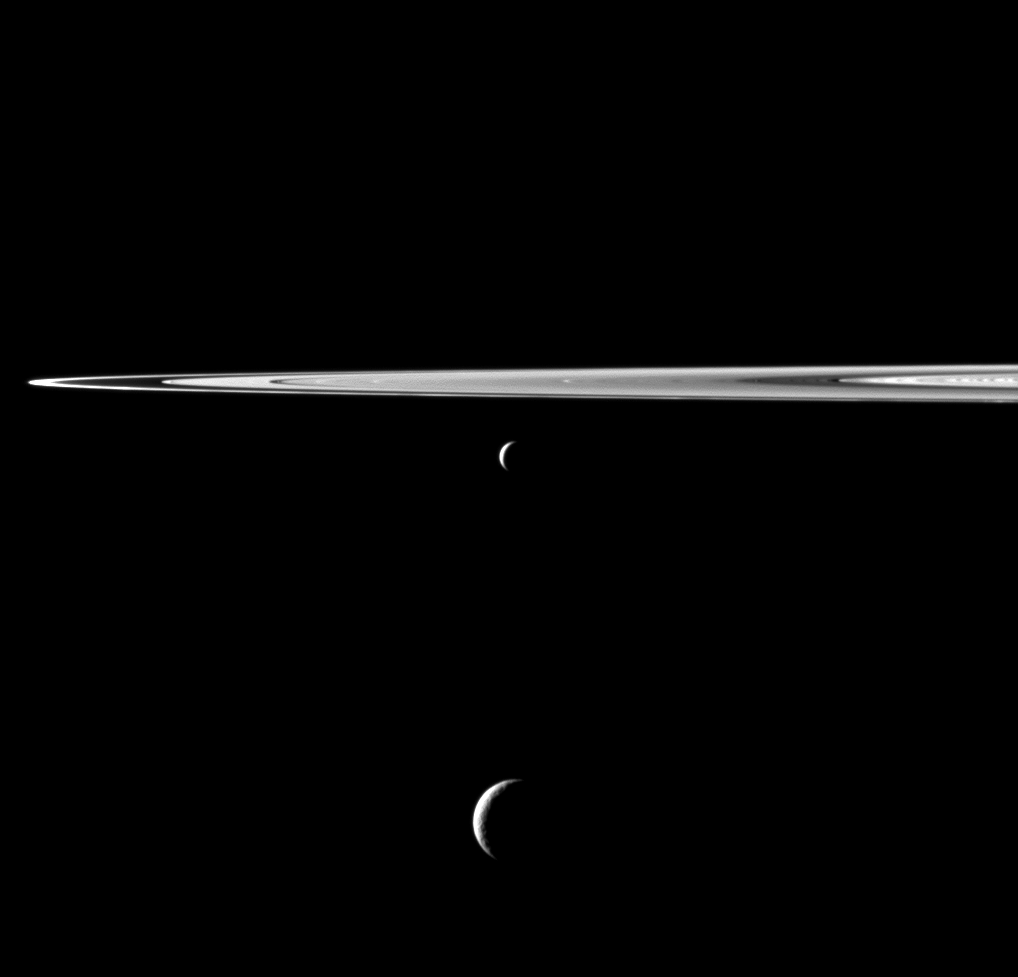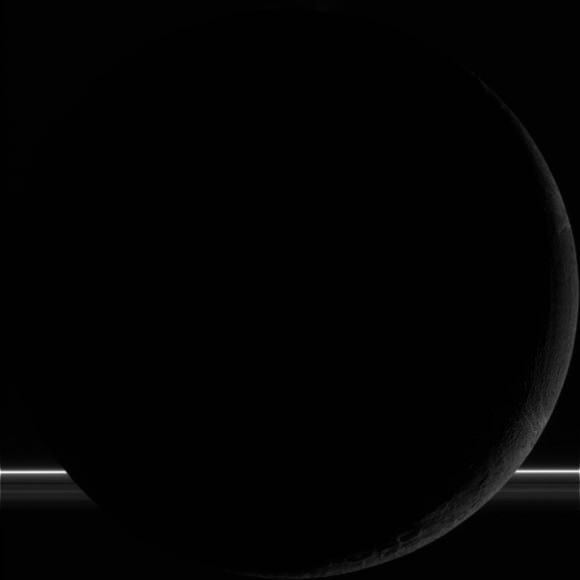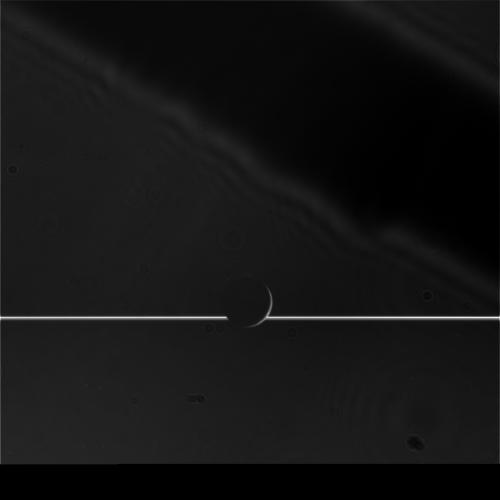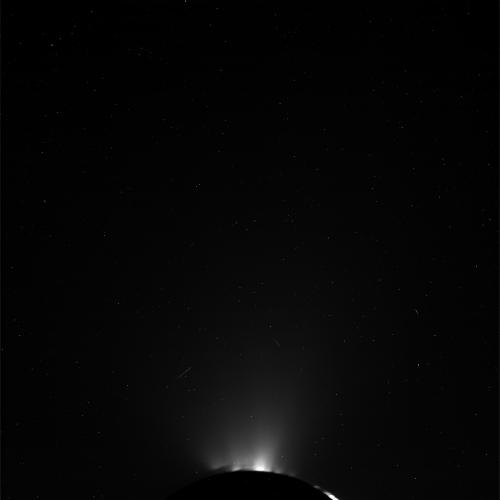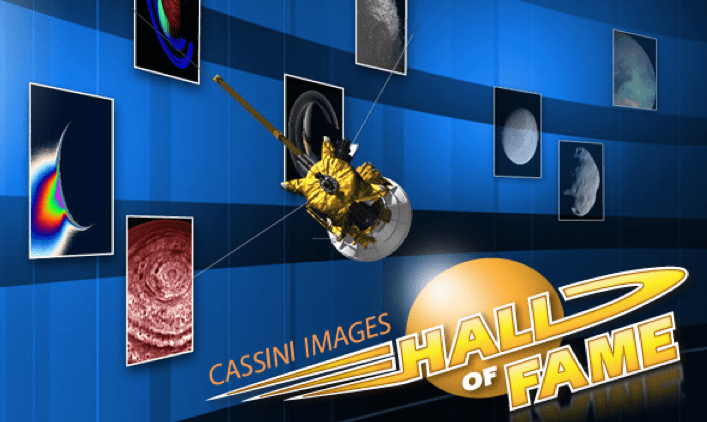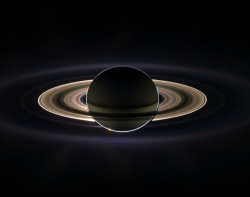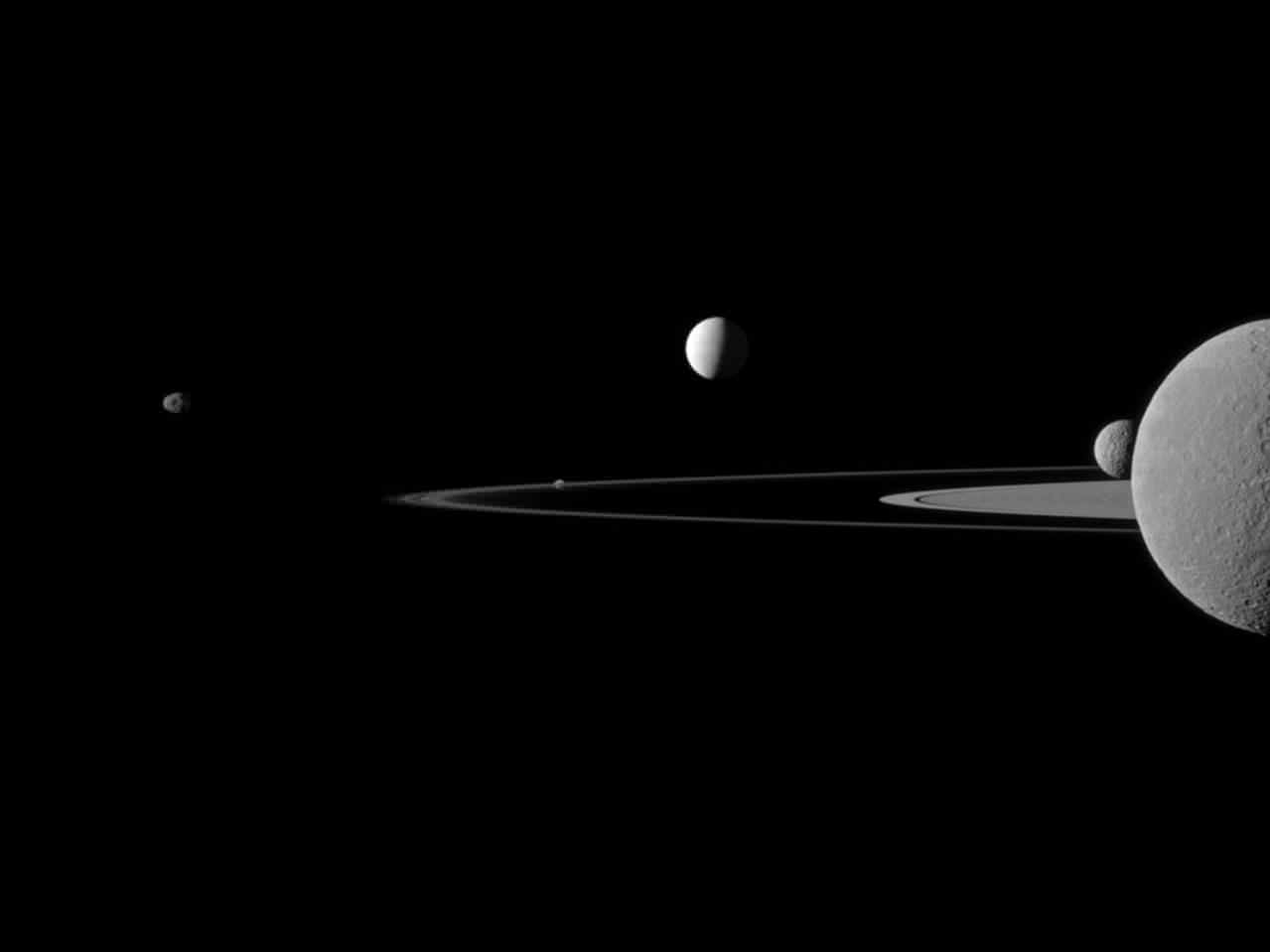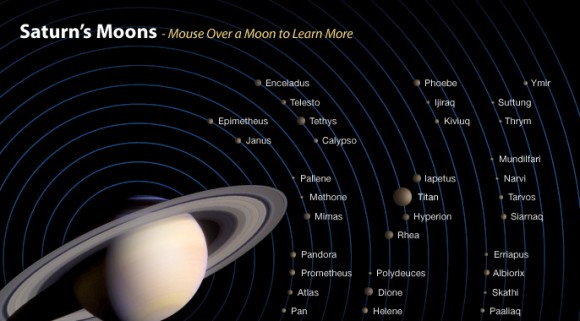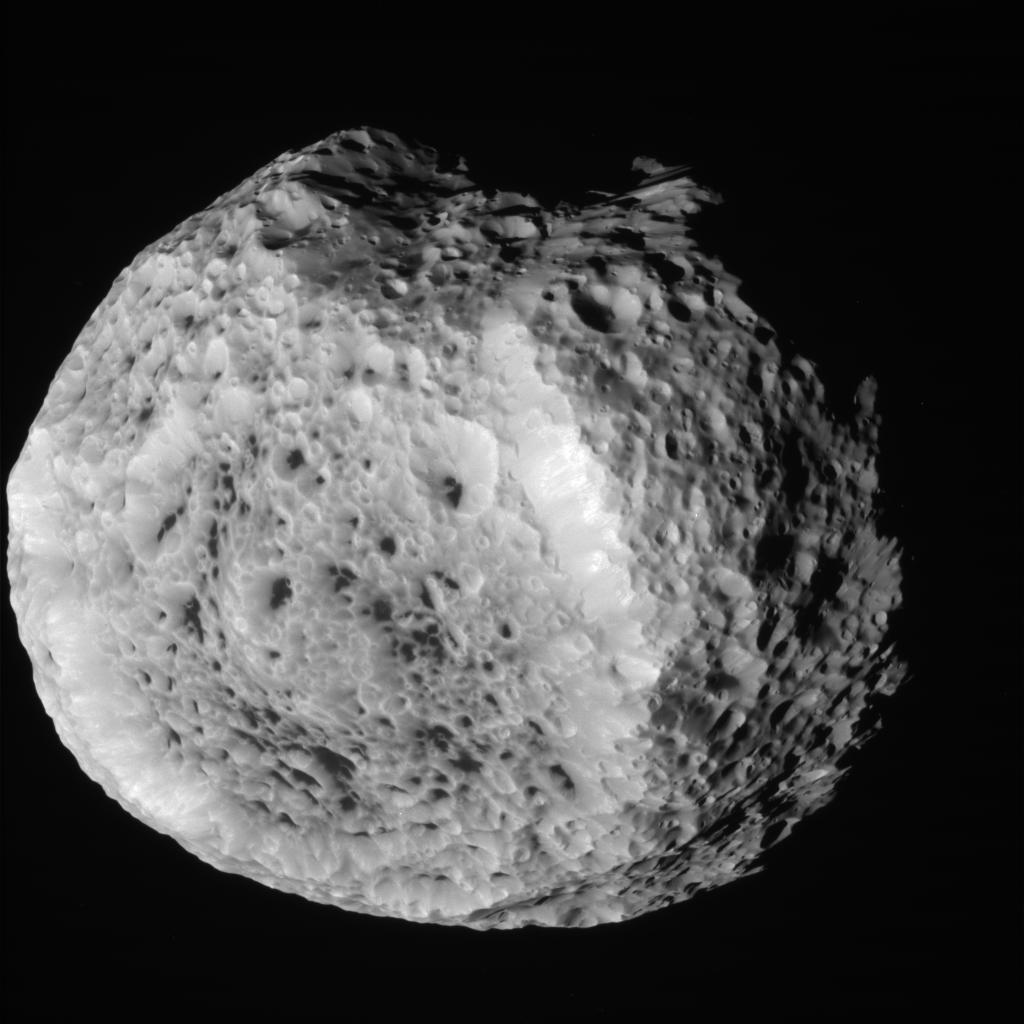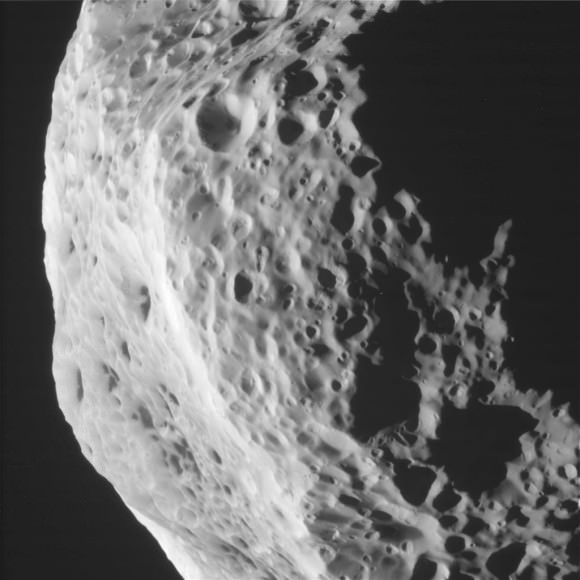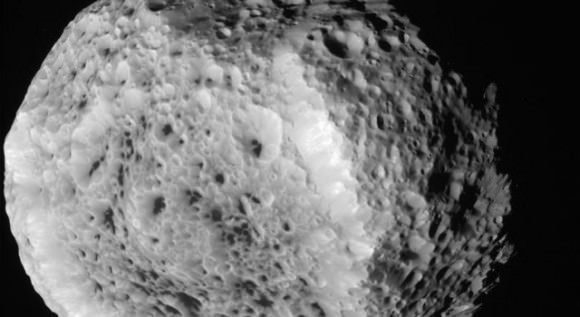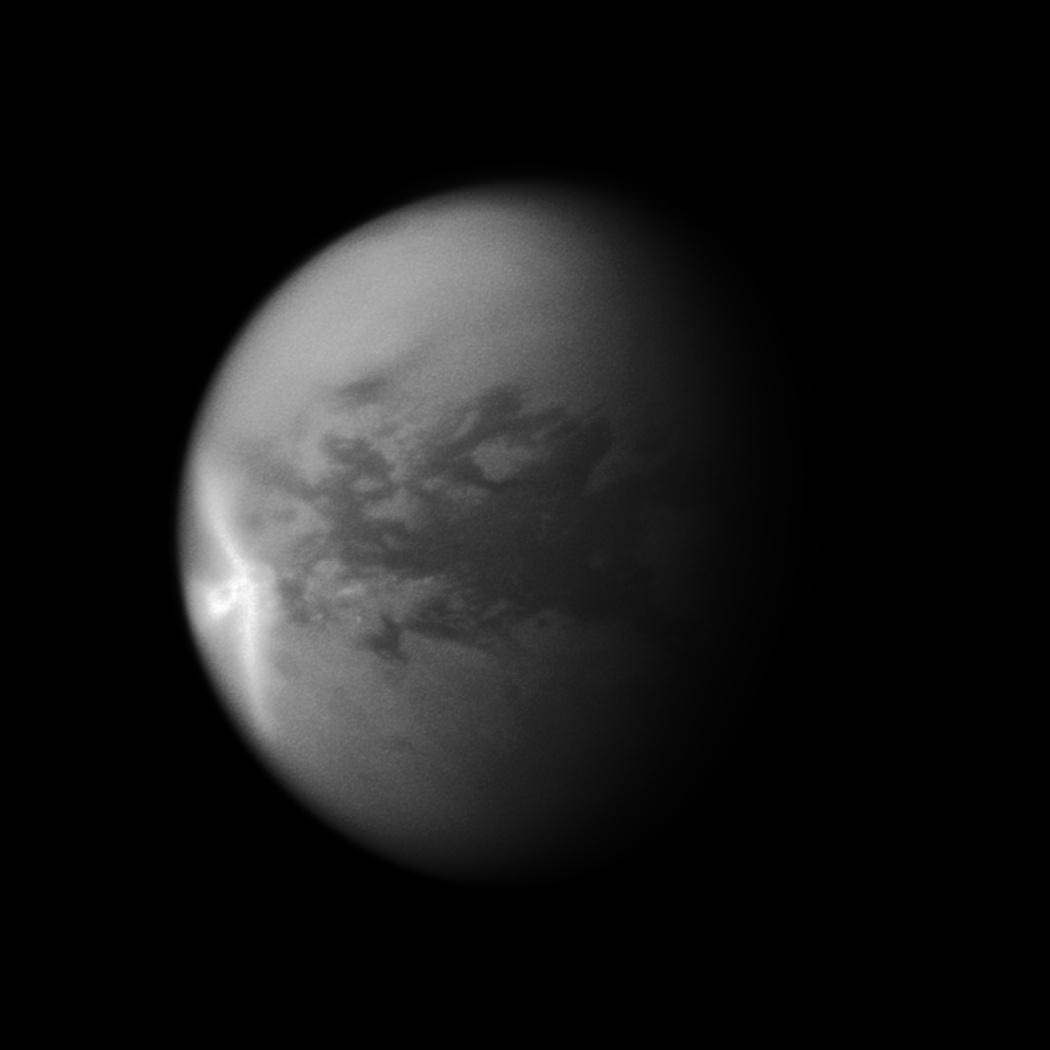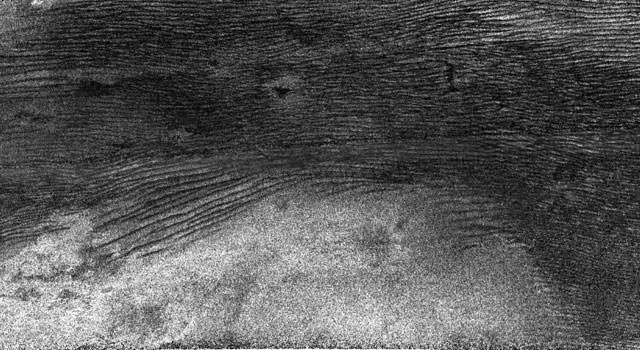[/caption]
Saturn’s tiny moon Enceladus was the centre of attention for the Cassini spacecraft again last week, with beautiful new photos being released of the moon and its water vapour geysers erupting from the south pole. Some views show surface detail on the moon, some are of the geysers themselves and there is a very nice shot of Enceladus silhouetted against Saturn and its rings in the background. There is even a dual ultraviolet stellar occultation in which two of the stars in the belt of the constellation Orion are seen shining through the plumes! Even though these are still raw, unprocessed images, they again capture the beauty of Enceladus and the Saturnian system.
These new images were taken October 19, 2011 during the E-15 flyby, in which Cassini flew about 1,230 kilometres (765 miles) above the surface of Enceladus. The geysers can be seen in the image below, albeit these are not the closest views that Cassini has obtained. Still, it can be clearly seen how far they extend out from the moon, for a few hundred kilometres.
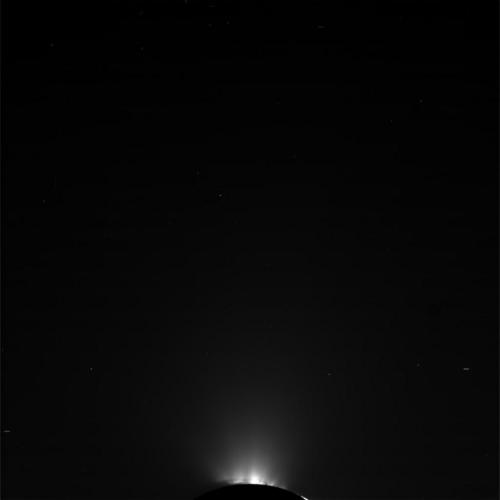
Some surface detail can be seen in the next image below, a hint of the geological complexity of this moon, most notably seen in the “tiger stripe” fissures at the south pole, where the geysers erupt from inside the moon, escaping to the vacuum of space outside, where the water vapour freezes and falls back to the surface of Enceladus as a form of snow. As some have suggested, Enceladus may be a good place for skiing (with the snow being a very fine powder, although the extremely low gravity would probably interfere too much…)!
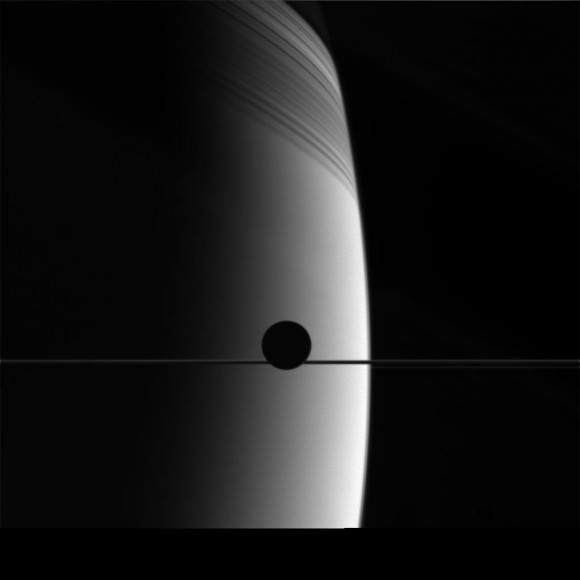
Having a personal fascination with Enceladus, I was reminded of an older “Captain’s Log” entry on the CICLOPS web site (2006), by Cassini imaging team leader Carolyn Porco, after the initial discovery of the geysers. In part:
“Our detailed analyses of these images have led us to a remarkable conclusion, documented in a paper to be published in the journal SCIENCE tomorrow, that the jets are erupting from pockets of liquid water, possibly as close to the surface as ten meters… a surprising circumstance for a body so small and cold. Other Cassini instruments have found that the fractures on the surface and the plume itself contain simple organic materials, and that there is more heat on average emerging from the south polar terrain, per square meter, than from the Earth.
Gathering all the evidence and steeling ourselves for the “shockwave spread ’round the world”, we find ourselves staring at the distinct possibility that we may have on Enceladus subterranean environments capable of supporting life. We may have just stumbled upon the Holy Grail of modern day planetary exploration. It doesn’t get any more exciting than this.
A great deal more analysis and further exploration with Cassini must ensue before this implication becomes anything more than a suggestion. But at the moment, the prospects are staggering. Enceladus may have just taken center stage as the body in our solar system, outside the Earth, having the most easily accessible bodies of organic-rich water and, hence, significant biological potential.
Many years from now, it may well be that we and those who follow us will look back on these explorations of Saturn and take our discoveries on this otherwise cold little world to be the most wondrous of any we’ve ever made.
Future explorers of Saturn will have much to look forward to.”


